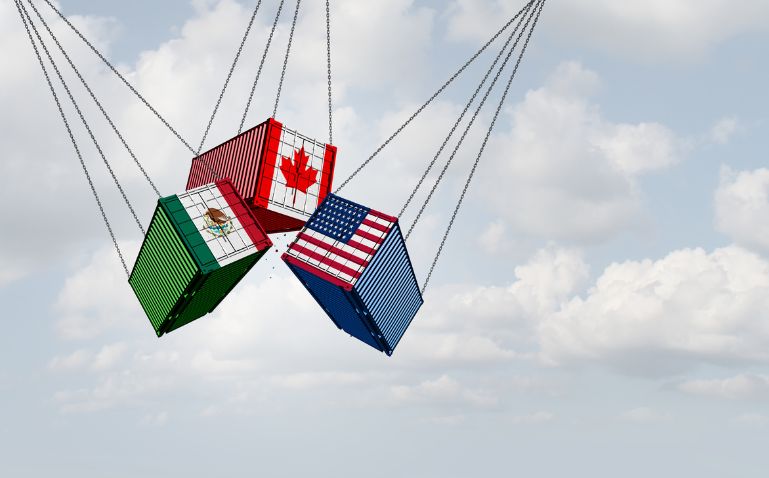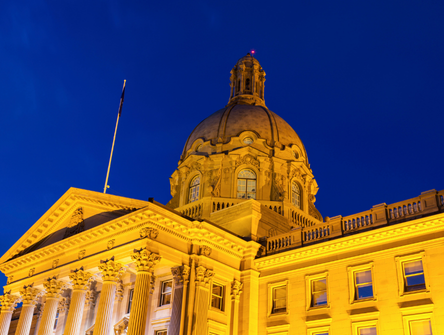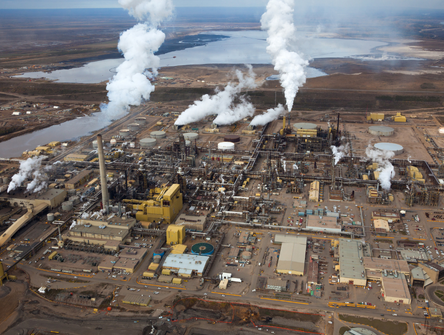What becomes of CUSMA in the throes of a trade war?
With a review of the trilateral free trade pact coming, Canadian trade lawyers are wondering where things are headed amid uncharted Trump minefields

Upon signing a new free trade agreement with Canada and Mexico in 2018, U.S. President Donald Trump hailed it as a “colossal victory” to end the “NAFTA nightmare.”
“The best trade deal ever made, they say,” he said of the trade pact, known here as the Canada-United States-Mexico Agreement (CUSMA)
Recently, however, while speaking to reporters in the Oval Office and bemoaning what he insists is an unfair trade deficit with Canada, his tune had changed.
“I look at some of the deals made. I say: ‘Who the hell made these deals? They’re so bad.’”
In his first few weeks in office, Trump was set to impose 25 per cent tariffs on virtually all Canadian goods and a 10 per cent tariff on oil and gas.
His executive order declared that “the flow of illicit drugs, including fentanyl,” into the United States from Canada and Mexico was a “national emergency and a border security issue.”
Hours before they were to come into force, Trump’s tough talk evaporated and he agreed to a 30-day pause on the tariffs, accepting border control proposals already announced by Mexico and Canada, while adding two conditions: that the two countries follow the U.S. in designating drug cartels as terrorists, and naming “fentanyl Czars.”
Trump applied another condition to the tariff pause, saying the 30-day period was “to see whether or not a final economic deal with Canada can be structured.”
A week later, he announced 25 per cent tariffs on all steel and aluminum imports from all countries, including Canada, with no exceptions or exemptions. He also mused about an additional tariff on Canadian-made cars, which could be as high as 50 to 100 per cent.
“Most commentators would agree that imposing tariffs like this is a violation of CUSMA,” says John Boscariol, the head of McCarthy-Tétrault's international trade and investment law group and member of the Canadian Bar Association’s CUSMA working group.
“Trump is ignoring CUSMA.”
He wonders if the president will come up with other reasons to renew the tariffs over the 30-day period.
“It’s difficult to get a hard sense as to what exactly Trump is concerned about,” Boscariol says.
“One day it’s something, the next it’s something else. They are willing to wield the tariff axe above Canadian heads to get what they want, whether that’s in trade policy or immigration or illegal drugs.”
The climate is chaotic as a joint review of CUSMA by the three signatories approaches. It’s scheduled to start next summer, but given the current unpredictability, Canada’s trade lawyers are wondering where things are headed with the trilateral trade pact.
The U.S. law implementing CUSMA requires the United States Trade Representative (USTR) to initiate public consultations 270 days before the July 1, 2026, start date for talks. That would be this coming October.
However, Trump is fast-tracking that process with another executive order setting an April 1 deadline for the USTR to report back with recommendations on U.S. participation in CUSMA.
Brenda Swick, a partner at Cassels’ international trade group, sees Trump rushing ahead with an early start to trade talks, aware that his Republicans will likely lose the Senate or the House in the 2026 midterm elections, hindering his agenda.
“I actually think in some way we’re seeing the renegotiation of CUSMA now in real-time,” Boscariol says.
Lawrence Herman, a former Canadian diplomat, counsel with Herman & Associates, and senior fellow of the C.D. Howe Institute, says that with so much uncertainty at play, CUSMA’s review process, which is “rather orderly but not particularly well-defined,” is not going to be the governing process.
“We're talking about a full-scale renegotiation, and we don’t know what the U.S. is going to demand,” he says.
“I think their demands will be quite onerous, including supply management, access to banking, the digital services tax and a whole range of other things that the Americans don't like.”
Herman has called for a special envoy knowledgeable on trade issues and with the political chops to deal with Washington. Former premiers Brad Wall, Jason Kenney and Jean Charest are among the names he’s suggested, as is former prime minister Stephen Harper.
Chops and more won’t go astray. While Trump is obliged to respect U.S. legislation enabling CUSMA, Swick says he will deploy bare-knuckle real estate developer tactics in trade talks.
“You have an empowered president of the United States who does not follow the rules and the norms. Even if Canada does have strong negotiating positions, his approach is ‘I'm going to do what I want to do, and if you don't like it, sue me.’”
Boscariol says the Canadian government must keep a “level head” when dealing with this administration. On the upside, Canada has U.S. allies for oil and gas flows and the auto sector, given the three-country supply chains created under CUSMA. He says Canada also has support among American businesses, in Congress, in the Senate, and in states where trade with their northern neighbour is important.
“I think part of the negotiating strategy on the Canadian side is to make sure they've got those allies as well who will hopefully influence the Trump administration in this process.”
Boscariol notes that Canada’s National Energy Policy (NEP) in the 1980s, when oil sold for $35 a barrel, included an export tax of $8/barrel on oil shipped to the U.S. He says the U.S was open to free trade with Canada then to avoid NEP-type trade barriers.
“They wanted access to our resources and I believe those interests still exist, notwithstanding what Trump says about the U.S. being able to supply all of its own energy needs.”
That said, the USTR has been tasked with reporting on which countries the U.S. can negotiate bilateral or sector-specific agreements with to obtain export market access for Americans.
For example, the U.S.-Canada Auto Pact is a sector-specific agreement dating back to the 1960s. A new U.S.-Canada sector-specific deal could exclude Mexico, whose auto plants are a frequent Trump target, to have more cars built in the U.S.
“Say the Americans demanded an auto pact and Canada had to agree,” Swick says.
“If Trump gets these changes unilaterally, without going through the CUSMA, he may not get all the concessions he wants.”
She says Trump wants deals outside the tree trade pact, given the short window before the 2026 midterms.
CUSMA expires in 2036. The agenda for the July 2026 renewal talks calls for the three countries to unanimously agree on a 16-year extension to 2042.
“But the U.S. will likely withhold approval to compel a partial renegotiation of certain commitments,” Swick says, including modifications to the auto industry, the rules of origin, or new restrictions on Chinese companies.
“This time around, the United States administration is different. It is a much more emboldened administration that does not care about the rules or Canada's negotiating position. It’s, ‘Take it or leave it. I'm going to get what I want.’”


